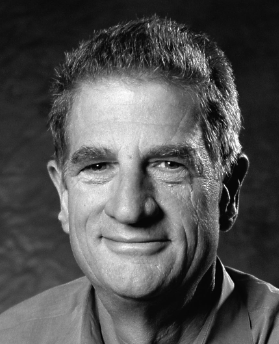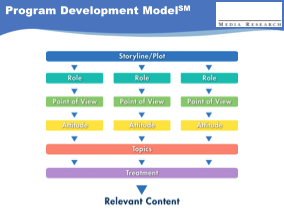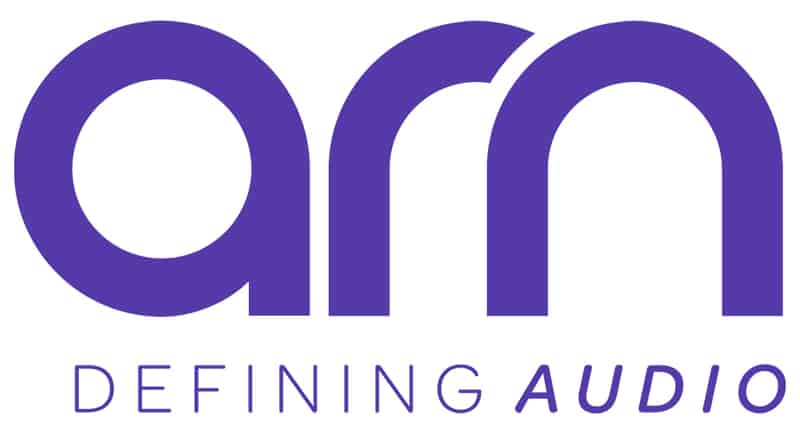How to Win the Ratings – The Breakfast Show Blueprint – Part 1

Greg Smith is a Director of Radio Today.
The key to ratings success is to build positive brand images. The smart thing to do is build them one at a time, bearing in mind the hierarchy that exists for musical & personality product attributes. In a previous article I wrote about the importance of winning the ‘Playing the best music for my taste’ attribute & also the mood service that the station provides.
In this series of articles I wanted to explore the equally important strategic position of owning the ‘Funny & Entertaining Breakfast’ hill. Kyle & Jackie O’s defection to KIIS has demonstrated the almighty power a great breakfast show can deliver to a station.
So how do you win ‘Funny & Entertaining Breakfast’?
I’ve enlisted the help of prominent programmers & researchers, people much smarter than me, to answer that question. Most of them I’ve had the pleasure to work with over the years & I thank them for the knowledge they passed onto me.
So what are the key ingredients for a top rating breakfast?
First up Jon Coleman, one of America’s leading researchers.
 Jon Coleman founded Coleman Insights in 1978. Through much of the 80s, Jon also served as a vice president for Capitol Broadcasting Company. Prior to forming Coleman Insights and leading Capitol’s radio group, Jon held various positions with TM Programming in Dallas, Frank N. Magid Associates in Marion, Iowa and The Media Associates in Dallas. Jon holds a Bachelor of Arts degree from the University of Minnesota and a Master of Arts degree in Communications from the University of Oregon. He is based at our headquarters in Research Triangle Park, North Carolina.
Jon Coleman founded Coleman Insights in 1978. Through much of the 80s, Jon also served as a vice president for Capitol Broadcasting Company. Prior to forming Coleman Insights and leading Capitol’s radio group, Jon held various positions with TM Programming in Dallas, Frank N. Magid Associates in Marion, Iowa and The Media Associates in Dallas. Jon holds a Bachelor of Arts degree from the University of Minnesota and a Master of Arts degree in Communications from the University of Oregon. He is based at our headquarters in Research Triangle Park, North Carolina.
Over the years, Coleman Insights has done a lot of research on Breakfast radio shows. This research has usually been done to discover what morning radio listeners like or don’t like about specific shows. This research has led us to a deeper understanding, from a listener’s perspective, of “what makes a show tick” and what kinds of things inhibit a show from maximizing the opportunity in a given market on a specific station.
This article will look at the successful morning show, not from the standpoint of which segments make a show popular, but from the perspective of the common attributes among the most successful shows.
While we have learned that listeners like shows that are funny or entertaining, this depth of understanding does not help the show itself know what it can do to improve its chances of truly connecting. Instead, what the show and show management needs is a way of analyzing the show to figure out how to improve the odds that the show will connect.
A Program Development Model
This need led Coleman Insights to develop the Program Development Model. The model is based on all the research we have done over the last 30 years and diagrams six key variables that go into each program. The degree to which each program maximizes each level of the diagram will contribute significantly to their success.
Before discussing the model, I should say that this will not make a show with no creativity or no entertainment value a great show. But what it can do is raise the game of a B talent show to a B+ or A-, and it can help a show with A level talent maintain that level, rather than underachieving its potential.
The chart below outlines the variables of a successful morning show. We have found that the best shows demonstrate a clear vision and good execution at each level. Where does it start?
The Storyline/Plot
The model starts at the level of the storyline or plot: All the most successful shows have a storyline. What do we mean by that? It means the show has a reason for being. Is the show a collection of DJs that have nothing in common? Or is it a man and a woman simply talking and interviewing celebrities? These types of shows have no story to be told. There is no plot.
In contrast to the examples above, is it a show that has a plot which is obvious to listeners and to which they can relate? For example, in Los Angeles, KROQ's Kevin and Bean show reflects the life experience or "take" of a group of slightly cynical 30-year-olds. These guys resonate because of how they talk about, relate to and make fun of pop culture and living in Los Angeles in 2014. This plot permeates the show. One cannot listen for very long before it becomes obvious that the show is all about pop culture, current events and the strange and funny lives of those in pop culture.
The Bobby Bones show is a new American show that is currently on about 20 of Clear Channel's Country stations across the U.S. The storyline of this show is very different: This is the story of a city guy who likes Country music, but does not fit the “wholesome, rural and God-fearing” stereotype of the Country music consumer. Based on his program, he is meeting resistance from old school thinkers and old school country listeners. Bones is continually challenging the stereotype of the Country music fan with his more contemporary, cosmopolitan and urban show. Repeatedly the show asks: Will this former big city misfit be accepted by the Country radio audience? Can he develop a new Country audience that doesn’t like the traditional Country radio station or typical Country morning show? This plot is played out on the air virtually every day.
We have found that a show is much more likely to catch on when it has a plot or story line that makes sense to the audience and reflects the plot every day in obvious ways. This makes it easier of for the audience to know what to expect when they tune in.
Roles
Roles are another important layer in the model. We have found that each player needs a role, and in this context there are really two kinds of roles. One is a specific place or function in the show. When a show has more than two players, listeners can get confused. Rather than having three or four people in the same or similar roles, all talking at the same time and coming from undifferentiated positions, it is better if the audience can identify the function of each person. Anchor, co-anchor, traffic reporter, sports, entertainment, etc. If listeners know each role, they are more likely to understand who is talking and how their comments are relevant.
Additionally, each player needs to fill a different role in the show, the same way that actors in a play have different parts. Protagonist, schemer, cynic, optimist, klutz/dork, party guy, feminist and mother hen are just a few of the roles a cast member can play in a show. This role definition is important because it allows listeners to clearly see differences between the players. By having different people occupy different personas/roles; the audience can more easily and quickly connect with the content at any given time. Over time listeners come to have expectations of what each person in the show offers. Thus, when a cast member acts the way they are supposed to act, they fulfill a need with all of their followers. Multiple roles create differences and tension between players. It is in these differences and the tension created that the drama and entertainment appeal of the show is fostered. And, by having people in different roles, there are more cast members for the audience to like, dislike or simply to be emotionally invested in.
In contrast, when more than one person on a show fulfills the same role, they in effect compete for a place in the listeners mind. "Who is the goof ball that does all those weird things in the show?" says the listener. If there is more than one person fulfilling that role, the listener's ability to affiliate is undermined. This also completely undermines the interaction and the chemistry of the show and creates unnecessary completion for the mike.
Point of View
Closely related to the roles on a show is the point of view of the show and of each player. How do the players view the world—and how does that relate to the way the audience views the world? For example, does the show have a young, single and urban take on the world, or is it suburban, married and older? Does the show have contemporary and progressive world view or is it more conservative and old school? Generally, it is important for the entire show to have a central point of view, usually driven by the protagonist or anchor.
Furthermore, the individual players need to have a point of view. They do not need to have the same point of view as the anchor, but it is important that when they are talking and interacting, that the audience has some sense of where they are coming from and what to expect. If an individual player does not have a point of view, it will be hard for the audience to develop any affinity for that person. Listeners are much more likely to really like a member of the cast if they know who they are and where they are coming from. If they understand the point of view of each player, they can then process the shows content with ease.
Attitude
The show and each player also need to reflect a behavioral attitude. Are all the players in the show negative and antagonistic? Or are they all chipper and upbeat? If they are all the same, then once again, the audience will be confused and will have a hard time bonding with individual performers. As in life, a cast member can have multiple attitudes depending on the day of the week and the show’s topic, but there should be a typical or normal range of attitudes for the show in total and for each player. The show can't be schizophrenic and neither can the cast members. If they are, they won't fully connect.
Topics and Treatments
The four levels of the show—Plot, Roles, Point of View and Attitude are the filters through which topics and treatments are selected. Many shows will select similar topics, but not always. And when two shows select the same topic, their treatment will be different. The difference in topics and treatment is based on the plot of the show and the point of view of the cast members.
A show that is about young people making their way in the big city might have a feature about "best first dates," while a show targeted to a similar demographic, but an audience that is more suspect or cynical, might not want a feature about dating at all. If it does, it might be "worst first date". The idea is that the topics and how they are treated are driven by the plot, the roles of each member of the cast, their attitudes and their point of view. Shows will be less likely to fully connect when their content is not properly measured against the brand of the show. Often a show will steal an idea from another show without thinking about their own plot or point of view—In other words they won't fit the bit to their own show.
When a Breakfast Show naturally, but intentionally, positions itself on the basis of the show's plot, they will find it much easier to find and execute content that is right for the show. And, when they do all of these things well, the odds of truly succeeding are much higher.
Jon Coleman is CEO of Coleman Insights. He can be contacted here or at the website.



